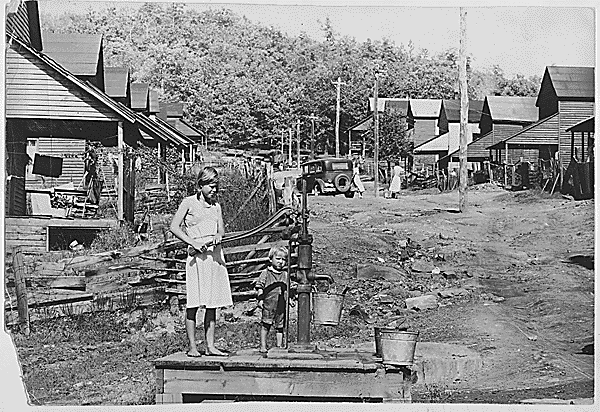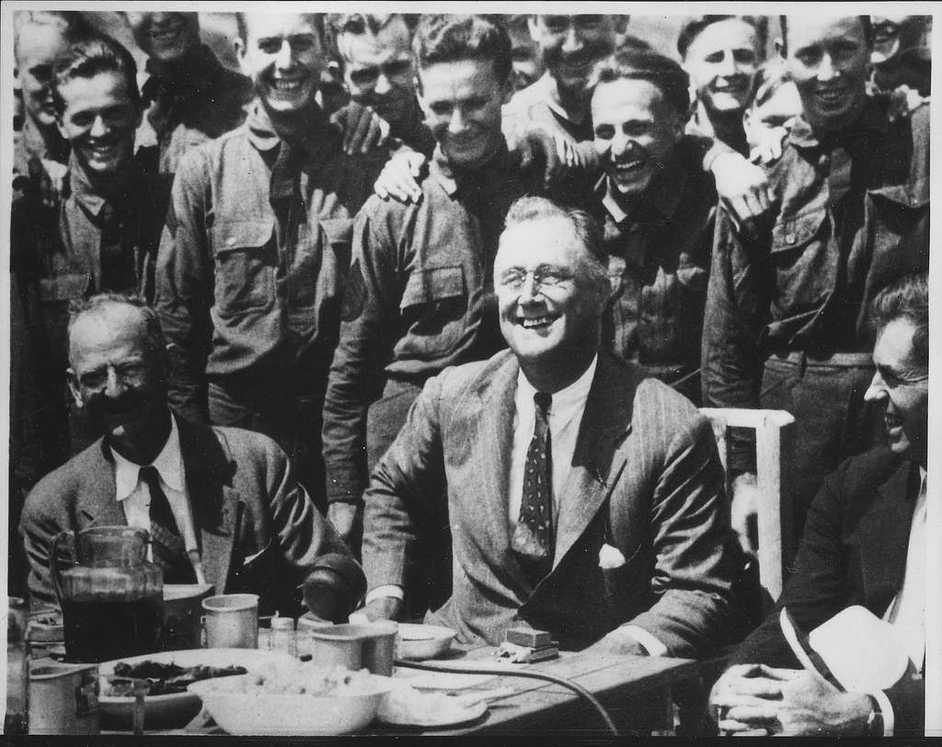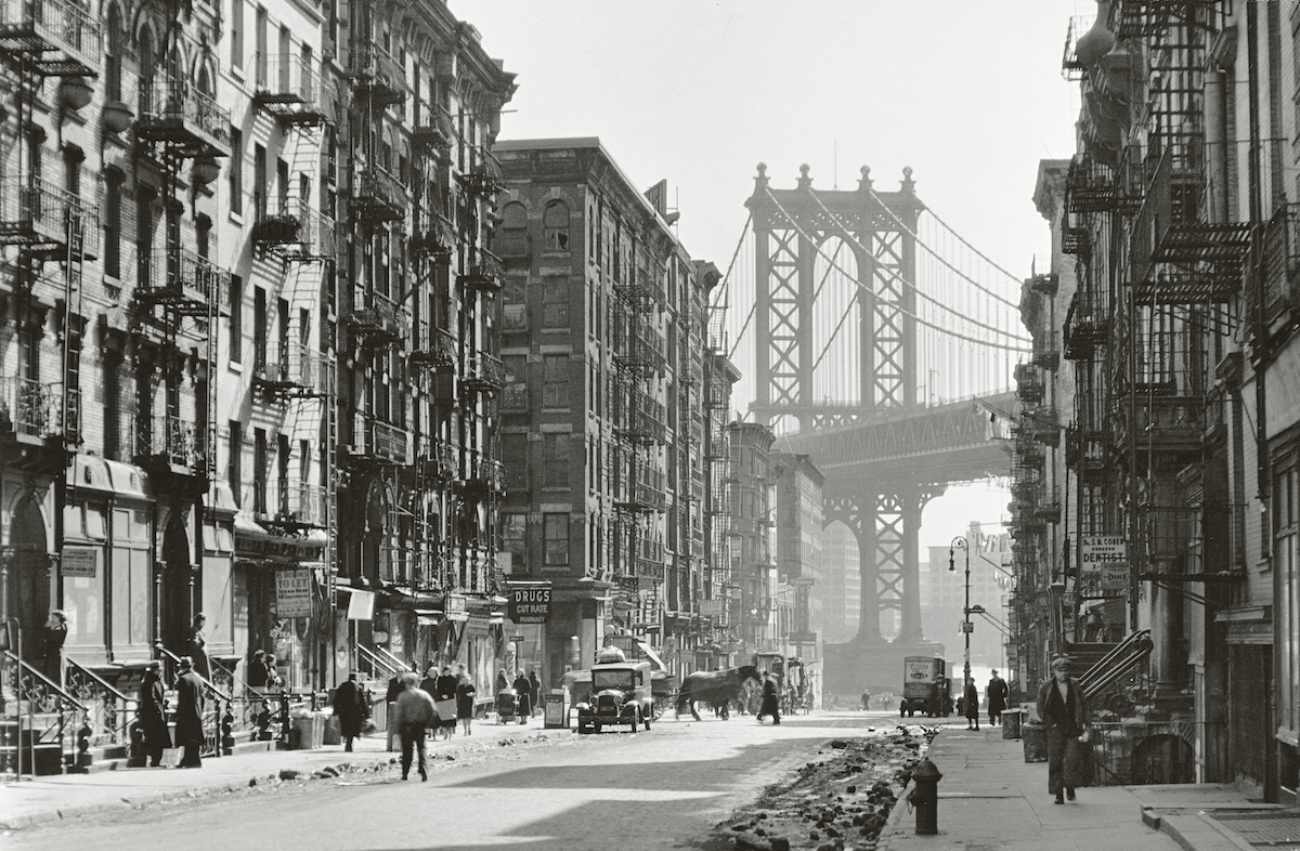Distress in the economy in 1929 In response to his administration’s role in plunging the country into the Great Depression, President Franklin D. Roosevelt instituted the interventionist New Deal. In response to firm failures and steadily rising unemployment, the state implemented social and economic measures to mitigate the situation. After its implementation in 1933, this strategy lasted until 1938. The New Deal established union rights, controlled business practices, and transformed the financial sector.
What Is the New Deal?

In the wake of the 1929 stock market collapse, the United States saw a wave of bankruptcies and a subsequent surge in the unemployment rate. The Great Depression affected the United States throughout the 1930s. Roosevelt took extraordinary political action to mitigate the economic damage. Indeed, it was the New Deal.
The New Deal was a vast economic recovery program implemented between 1933 and 1938 by U.S. President Franklin D. Roosevelt to counteract the effects of the Great Depression caused by the stock market crash of 1929. Beyond the rapid recovery of consumption and investment, this “New Deal” aimed to thoroughly reform the American economic system to prevent new crises.
The New Deal profoundly transformed American society, which until then had been opposed to any federal government intervention in the economy. It also inspired many economists, including John Maynard Keynes, who published his “General Theory” in 1936, a work that advocated government intervention, including budget deficits, to ensure full employment.
Why Did Franklin D. Roosevelt Create the New Deal?
Despite the efforts of the previous president, Herbert Hoover, the economic situation in the country was catastrophic. The unemployment rate was around 25%, the GDP had fallen sharply, the financial situation was precarious, millions of savers and farmers had been ruined. Between 1930 and 1933, American industrial production fell by half, or even by two-thirds in some sectors, agricultural prices fell by 25% to 50% depending on the product, and 14 million Americans were unemployed in 1933, that is, a quarter of the working population, who could only survive thanks to soup kitchens.

These were all indicators of an unprecedented economic crisis that saw the resurgence of demonstrations of revolt that were thought to be from another time and another world: the food riots.
Many businesses failed, and the number of people without jobs rose dramatically after the stock market crash of 1929. During Herbert Hoover’s presidency, the first signs of the Great Depression emerged. Franklin Delano Roosevelt, who assumed office after him, reformed the financial markets to stimulate the U.S. economy. It was the principles of economist and “Keynesian” movement founder John Maynard Keynes that influenced his interventionist New Deal strategy.
When and Where Did the New Deal Take Place?
First implemented in the United States in 1933, the New Deal strategy sought to improve economic conditions. The first noticeable effects of these and other policies, most notably those affecting the allocation of resources and economic power, were apparent in 1935. The five-year period of this interventionist program ended in 1938. The United States gradually shifted towards a military economy during this time.
The Great Depression of the 1930s was significant in that it ushered in the period of state intervention (theorized by John Maynard Keynes) in a market economy that had become weak due to its length, scope (beyond the United States, the crisis grew international), and societal hardship.
In light of this crisis, President Roosevelt and his advisors made the decision to increase Federal State involvement in economic regulation. This required a crackdown on certain financial activities (particularly credit and debt management), the creation of a massive public works program, and the establishment of a social welfare state. Far from it, this bold strategy did not have widespread support. Many economists panned it for the restrictions it placed on free markets, while the media and some politicians called it dictatorial and too centralized to fit with American ideals.
How Was the New Deal Put Into Action?

Initiated in 1933, the New Deal sought to rapidly implement Roosevelt’s economic and social initiatives. In these “First 100 Days,” policies like welfare, workfare, and financial reform were implemented as an emergency response. In 1935, a new New Deal was enacted, which included redistribution of wealth and protections for labor unions. The New Deal officially ended in 1938, while several of its initiatives continued for a while thereafter.
As part of his plan to end the Great Depression, President Franklin D. Roosevelt heavily intervened in the economy by creating new government agencies, subsidized programs, and public services in an effort to bring about a period of economic growth and job creation. The president relied on a committee of advisers, the brain trust, made up mostly of academics from Harvard (Boston) and Columbia (New York), each of whom represented a distinct school of thought in economics, to help him make these decisions.
There were two camps: the “planners,” who favored long-term changes to the system, and the “spenders,” who thought it was sufficient to just pump money into the economy to get things moving.
Roosevelt significantly expanded government expenditure by resorting to the practice of budget deficits ($3.5 billion in 1936). Among the main measures of the New Deal were;
- reviving industry and regulating competition (National Industrial Recovery Act or NIRA, 1933);
- combating unemployment through a policy of massive public works, most notably the development of the Tennessee Valley in 1933 (see the Tennessee Valley Authority or TVA);
- abandoning the gold standard and devaluing the dollar to 59% of its former value in gold (Gold Reserve Act of 1934);
- aid to farmers and the fight against agricultural overproduction (Agricultural Adjustment Act or AAA);
- and the creation of a social security system (Social Security Act, 1935), instituting old age insurance and unemployment insurance, within the framework of the Welfare State were all central tenets of the New Deal.
The Work Project Administration (WPA)
The Work Progress Administration (WPA) was founded on May 6, 1935, as a government organization that focuses on large-scale building projects (renamed in 1939 as the Work Projects Administration). The construction and restoration of private homes and public structures were both within the WPA’s purview. The Golden Gate Bridge in San Francisco, one of its most famous works, was a testament to its excellence. Through the FAP (Federal Art Project), it served a vital function in the cultural sphere. On June 30th, 1943, President Roosevelt signed an act disbanding the WPA.
The National Recovery Administration (NRA)
On June 20, 1933, Congress created a new government agency called the National Recovery Administration (NRA) to oversee matters related to the economy, workers, and the workplace. The NIRA mandated a level playing field for industries in need of revival. Businesses were now permitted to set a floor price for their products. The length of the work week and the minimum pay were both regulated by the NRA. On May 27, 1935, it was formally disbanded.
The Tennessee Valley Authority (TVA)

The TVA was a government agency that managed power plants, waterways, and flood protection in the Tennessee Valley. Tennessee, Alabama, Kentucky, Georgia, and Mississippi were all included in the TVA’s service area. It has been around since 1933, when it was first established. Hydroelectric and nuclear power generation are the primary focuses of its output. Thermal power plants are another asset of the TVA’s.
The Results of the New Deal

Though the New Deal had a mixed record when it came to the economy as a whole (in 1939, the national income still hadn’t returned to its 1929 level), it did contribute to long-term improvements in the country’s infrastructure. During the New Deal, the federal government refined its monetary (activity on the money supply) and fiscal (new taxes, practice of budget deficits) policy tools, which it would subsequently use to mitigate the consequences of economic downturns.
On the other hand, the social front saw tensions escalate during the major strikes of 1937, which were exacerbated by the crisis and the expanded privileges of trade unions. Although the jobless, single women, and the crippled had been marginalized in the 1920s, they were able to participate in American society again because of the New Deal’s social security programs.
After a promising start, another crisis in 1937 threatened to derail this strategy (or rather these policies, since priorities shifted over Rooselvelt’s first two mandates). Even while the New Deal’s impact on society is indisputable, its economic effectiveness is open to debate. Many people believed that it was America’s rearmament and subsequent involvement in the war in 1941 that helped lift the country’s economy out of its rut.
The consequences of Roosevelt’s economic strategy during the Great Depression are disputed, and at best they are seen as negligible. But the New Deal’s positive influence on society is undeniable. The president kept in close contact with the populace by holding frequent news conferences.
Due to the revisions, new laws could now be enacted to protect workers’ rights in the workplace and regulate the financial sector. The New Deal left a significant political and social legacy since it authorized the establishment of several government agencies, most notably those tasked with protecting individuals’ civil liberties.
The Global Impact of the New Deal
With the New Deal, a new kind of “experimental” interventionism was born in an emergency setting to try to alleviate shortages. Keynesianism is most often understood as a method entirely linking social expenditure with economic recovery, and after WWII it was applied to all developed nations.
Public interventionism, however, was originally intended as a mechanism fulfilling a function similar to that of a liberal economy: to secure, as far as possible, an optimum equilibrium in all markets, whether they be for commodities and services, the labor market, or the money market.
This has led to an increase in the number of separate interventions across different economic sectors, with the state increasingly taking on the role of an entrepreneur by intervening directly in the workings of the economy through measures such as nationalizations, price controls, and banking dirigisme rather than simply seeking to correct imbalances on a macro level. The role of the state is central to the discussion, since this interventionism is often seen to be the driving force behind the “pure” liberalism that has defined the economies of the industrialized world since the mid-1980s.
FOCUS DATES OF THE NEW DEAL
The Black Thursday, October 24, 1929: The Wall Street Crash
Black Thursday, October 24, 1929, was the beginning of the “great panic” in the financial markets. First to go was the New York Stock Exchange, where 12 million shares were sold. On Tuesday, October 29, 1929, a price decline of 30 percent was recorded, triggering the worst economic catastrophe in human history. The name for this event is the 1929 stock market collapse.
A bankruptcy for the Creditanstalt was filed on May 11, 1931.
The international repercussions of the 1929 crisis may be seen even now. Creditanstalt, an Austrian financial institution, collapsed two years later. As a result, the Austrian stock market crashed, followed by Germany’s, and the European economy went into a tailspin.
The financial collapse of the Danat Bank on July 13, 1931
Both the Danat Bank and the Creditanstalt filed for bankruptcy in 1931. The American companies’ approach of buying up failing foreign companies in an effort to mitigate the economic fallout from the Great Depression of 1929 had a devastating effect on a German bank. They were able to recoup their losses by selling the stocks they had purchased overseas.
September 21, 1931 – The pound sterling is devalued
The depreciation of the British pound sterling occurred after the stock market crisis of 1929. In a little over a year, the value of the pound dropped by about 40%. As part of this process, the government also gave up the gold standard for its currency.
During a speech on July 2, 1932, President Roosevelt brought up the “New Deal”
As early as 1932, Roosevelt laid out the foundations of the New Deal. Several of his close associates, such as the economist John Maynard Keynes, were mentioned, along with their suggested economic and social policies. The goal of this interventionist strategy was to reduce the damage caused by the Great Depression of 1929. It put an emphasis on reworking financial markets, building real estate, and expanding welfare services.
Formed by Roosevelt on March 4, 1933, “A New Deal for the People”
Soon after his election as president, Roosevelt began making plans to enact the New Deal in order to mitigate the economic downturn. This included building large-scale projects around the country and establishing agencies and initiatives to boost the economy.
The United States banks were shut down by President Roosevelt on March 5, 1933
All American banks were closed for four days after Roosevelt’s inauguration. This step was an attempt to calm the market after a string of bankruptcies. Creditors were to be repaid on March 9, 1933, and banks were to be permitted to reopen.
On March 6th, 1933, President Roosevelt instituted a ban on the trading of gold
As part of his plan to end the Great Depression, Roosevelt imposed a ban on the export of gold. After abandoning the gold standard in April 1933, the president reaffirmed this policy approach.
The Civilian Conservation Corps was established on March 31st, 1933
A job-creation initiative launched by the Roosevelt administration, the Civilian Conservation Corps (CCC) provided training and paid employment to young people who were otherwise without opportunities. Planting trees and fixing up old buildings were meant to be the means by which poverty and crime were kept at bay. The Civilian Conservation Corps (CCC) was an organization established during the New Deal that is famous for its role in constructing bridges, towers, and trails throughout the United States.
Agricultural New Deal programs launched on May 12, 1933
The New Deal policies had an impact on the agriculture industry in the United States. The AAA’s restrictions on agricultural output were enforced by the government. The government provided monetary compensation in exchange. Overproduction, which led to a drop in raw material prices, was the target.
The Tennessee Valley Authority was established on May 18th, 1933
The TVA was a government agency whose mission was to lower the rate of unemployment in the Tennessee Valley. After years of research and development, it was optimized for the generation of energy. In use even now, it has established itself as a pioneer in the fields of hydroelectric and nuclear power.
The National Industrial Recovery Act was signed into law on June 16, 1933
The New Deal included the National Industrial Recovery Act (NIRA) vote, which was focused on the manufacturing sector. It stipulated a code of fair competition and the implementation of minimum pricing on the worth of goods and services. These orders were carried out by the NRA (National Recovery Administration). It’s important to notice that there was a floor under which both hours worked and money earned had to fall.
The Social Security Act was signed into law on August 14, 1935
The United States now has a system of social assistance thanks to the passage of the Social Security Act. The elderly, the jobless, single mothers, and their children without father figures were the primary targets. In the midst of extreme poverty, it was referred to as a “welfare state” and a kind of social insurance.






